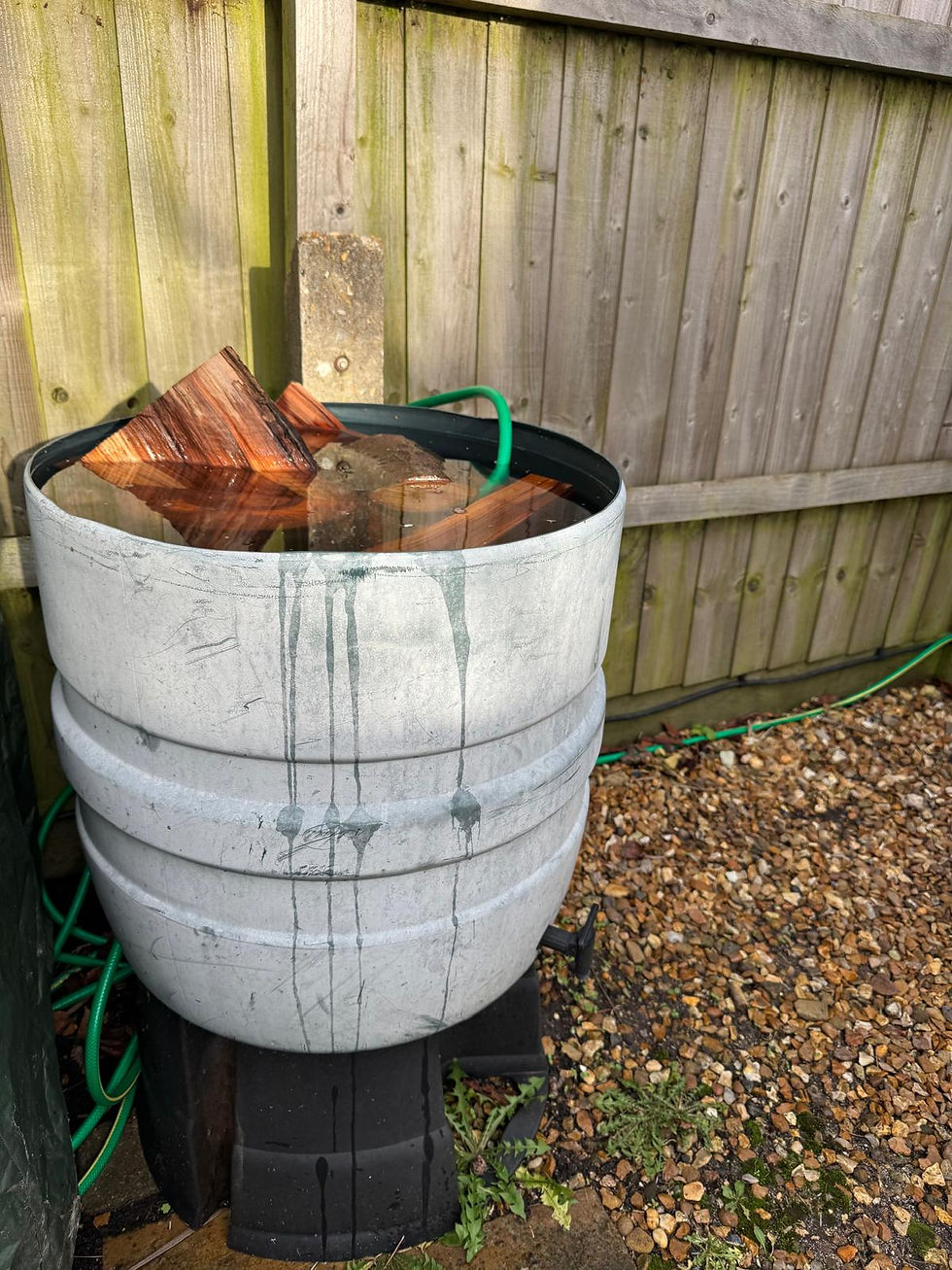Greenwood Storage
- Max Sconyers
- Dec 24, 2024
- 3 min read
It’s in the very name of our craft and is our most precious resource: freshly cut, supple, wonderfully green wood. Working with green timber is a rich experience. Its smell and texture still vibrant and raw. Bark on, damp, and full of its character from life. I find it to be a connective practice to work with the unprocessed material. A dried board that has been beaten into submission seems to no longer have a voice in the process. A green log though, with its in-built tensions and twists, is able to inform the maker what shape it is willing to take.
Whilst a traditional woodworker is tasked with keeping their materials dry, the green woodworker fights against time, and seemingly all other aspects of the environment, to keep their wood green. Green, in terms of timber processing and woodwork, simply means freshly cut and unseasoned. Green wood is used for hand craft because it is easier on our tools, and easier on our bodies. It also allows us to manipulate the wood in ways that dry timber does not. Wood contains two types of moisture: bound and unbound. Bound moisture is the moisture in the living vascular system of the tree, that carries nutrients, water, and minerals throughout the tree. Unbound moisture is all other moisture, including rain and other environmental moisture on and in the tree. You can add unbound moisture back to wood, like when your seasoned firewood gets a good rain, but bound moisture must be retained from the time of cutting. We aim to keep that moisture in.
There are various methods of keeping wood green for carving, and the following techniques are what I have found to work for me:
· Leave your cut material in the longest length you can. While space and weight are limiting, do your best to leave it in long sections. The ends may check or crack, but the material within the centre will stay moist for longer.
· Keep the wood out of direct sunlight, rain, and wind. Radiant heat from sunlight and the drying effect of passing air are the biggest drivers of moisture loss.
· Cover with a tarp or some sort of moisture barrier material. This keeps the wood in the shade and also creates a more humid environment.
· Keep the wood up off the ground to prevent rotting. While this can lead to the often-desired growth of spalting fungi, you want to avoid rot. Lay logs or billets on pallets, branches, or other surface.
· Store split logs and branches in water to preserve the moisture content. I use a rain barrel half, pictured below, but any vessel will do. Be sure to change the water regularly. At least once a week, more often in hot weather and less in cold temperatures. The water will tend to smell and run a but rancid if left stagnant. This why I prefer the repurposed rain barrel or similar with a drain spout. A draining function of some kind will make the task of changing the water much easier.
· Once you have processed the wood into billets or spoon blanks, or if it is already small enough to fit, wrap in a reused plastic bag and store in the refrigerator or freezer. Wood will stay in good carving condition for weeks in the refrigerator and months in the freezer. Any mould that forms in the refrigerator will usually carve away.
· When carving a spoon, wrap in a reused plastic bag between stages or when coming back to it later. A half-finished spoon loses a lot of moisture to the air as we carve it. For a spoon between stages, I use an old take away container, with a thin damp sponge in the bottom, and a piece of plastic from a lid on top of the sponge (pictured below). This keeps the spoon in a moist environment but away from direct contact with the wet sponge.
Employing any of the above methods will help to keep your material in good carving condition. These methods have worked for me. In short, keep it shady, keep it cool, keep it wet, and when it is time to dry, dry slowly and evenly.





.png)


Comments